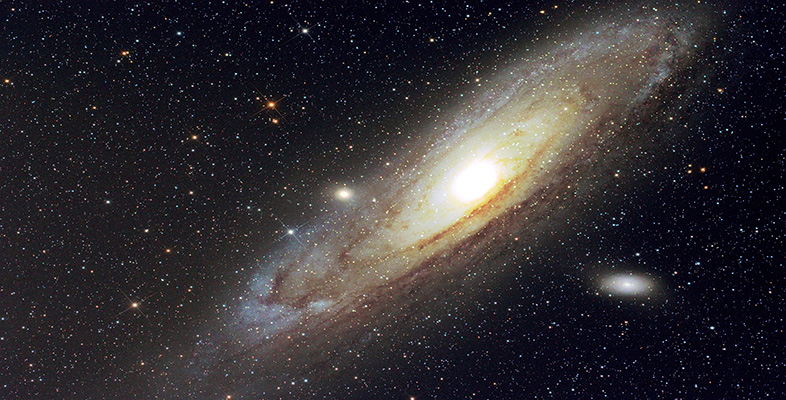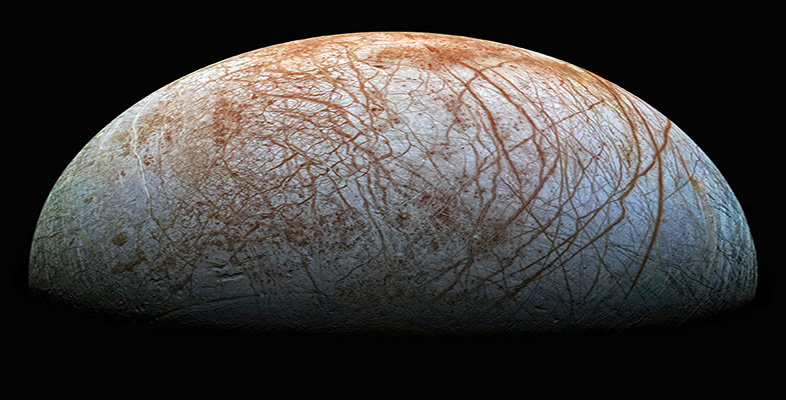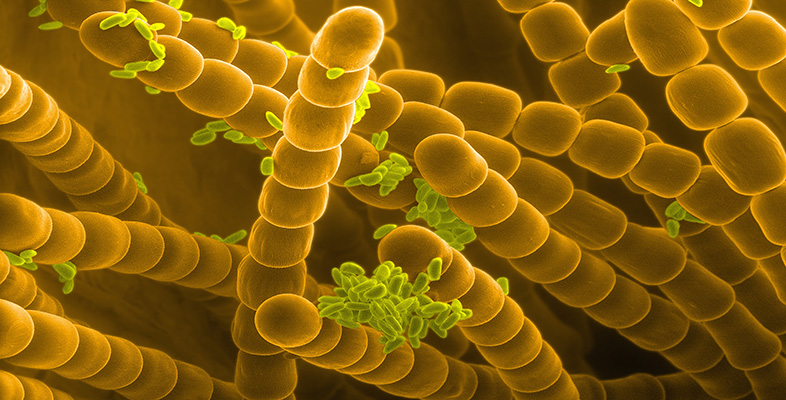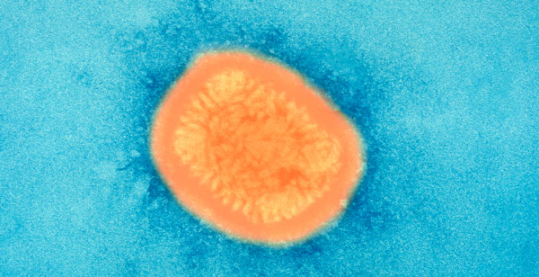Find out more about The Open University's Science courses.
Why do astronauts float on the space station? Contrary to popular belief, it isn't because there's no gravity. The gravitational pull of the Earth is almost as strong in the orbit of the International Space Station as it is on you as you read this. Astronauts are experiencing weightlessness because they are in a microgravity environment.
But what is microgravity and how does it help scientific research? David Mitchell explains in this four-part series. Explore how we recreate microgravity conditions here on Earth using drop towers, parabolic flights and even beds! Find out how this helps us to understand processes as diverse as human aging, bacterial resistance, and planet formation—without going to space at all!
The series is funded by the UK Space Agency—learn about their Principia mission and read Andrew Kuh's What is microgravity? post on their blog. For a different take, you can read the OU's Sabrina Gaertner's post on The Conversation, Explainer: What is microgravity?
Video 1: What is microgravity?
What causes that feeling of momentarily losing your stomach when you go over a hump-back bridge? Weightlessness! This video, narrated by David Mitchell, explains what microgravity is and the value for scientists of creating a ‘weightless' environment on Earth.
More about the science
'What is microgravity' builds on ELPIS, the European Life and Physical Sciences in Space research programme faciliatated by ESA, the European Space Agency. You can read more about ESA's drop towers and how they are used.
Video 2: The vomit comet
How do planets form? This video, narrated by David Mitchell, reveals the way OU scientists are using microgravity environments to understand how planets form, with a queasy ride in a plane.
More about the science
Two of the academics associated with this video, Ben Rozitis and Helen Fraser, have flown in the vomit comet to understand how planet formation happens. Another OU academic, Sabrina Gaertner, is building a new 'icy particle basher' experiment to fly in 2016-2017. Helen flew 250 parabolas, but none of the team have been sick in flight... so far.
In the clip below, Helen talks about the OU experiment and experiencing weightlessness on a parabolic flight. You can also read Andrew Kuh of the UKSA on how parabolic flights are being exploited by UK researchers for their science.
Even in our experiments, getting icy particles to stick together is difficult - in fact almost impossible, as explained here:
Scientists looking at how planets form now think something called a streaming instability is the key. This sounds complicated, but it's not dissimilar to a traffic jam, or a bunching up of all the dust in a planet-forming region into one place.
Amazingly, the research carried out on parabolic flights by OU academics and researchers backs up this idea. The icy particles collide, then slow down and start rotating. This means faster particles behind catch them up like cars on a motorway approaching roadworks. They collide, slow down, and you have a knock-on effect. When enough dust accumulates in the same place, gravity takes over, and it all combines to form the rocky core of a planet.
This research work is conducted at the OU in the Astrochemistry Group whose research work is explained in this public lecture from 2013 and a brief clip from ITV news.
Find out more
-

Galaxies, stars and planets
Learn more to access more details of Galaxies, stars and planetsThis free course, Galaxies, stars and planets, is a general introduction, including scale of the universe from the very large to the very small; orbits and gravity; the Solar System; the Sun and other stars; galaxies and the composition of astronomical objects.
Free course
8 hours
Level: 1 Introductory
-

Icy bodies: Europa and elsewhere
Learn more to access more details of Icy bodies: Europa and elsewhereThe new discipline of astrobiology that is, the science of searching for extraterrestrial life, is not only rapidly growing, but has also captured the public imagination. This free course, Icy bodies: Europa and elsewhere, examines the emergence of icy satellites of distant planets as potential sites of extraterrestrial life, looks at the ...
Free course
17 hours
Level: 2 Intermediate
'The vomit comet' builds on ELPIS, the European Life and Physical Sciences in Space research programme faciliatated by ESA, the European Space Agency. You can read more about ESA's parabolic flights and how they are conducted.
Video 3: Bed Rest
Fancy lying down for 6 months? This 60-second clip, narrated by David Mitchell, explains how scientists have managed to examine the effects of aging, using little more than a bed.
More about the science
Prof. Ian MacDonald of Nottingham University was the academic consultant on this video, which highlights his group’s research into aging, supported by BBSRC. You can read Andrwe Kuh from the UKSA on what we learn from long-term bed rest.
Researchers use bed rest to simulate the long-term effects of microgravity on humans and it is a key element of understanding astronaut health. In the future we intend to send humans on much longer missions, back to the Moon, Mars and beyond, so bed rest studies will be very important. But the greatest beneficiaries of bed rest studies are our current human population on Earth.
Many parts of the world have aging populations, but especially Western Europe, America and Japan. People living here have significantly increased their life expectancy over that of previous generations and they can also expect a better quality of life in later life. But longer lifetimes bring new health challenges, such as osteoporosis (bone density loss), muscle loss, changes in blood pressure and immune system changes. This makes bed rest a great (and ethnically acceptable) model for studying the effects of aging.
Typical bed rest campaigns involve ‘patients’ lying down in bed for up to 6 months. They never sit up and lay with their held tilted downwards by about 6 degrees. While it might seem a great idea to stay in bed for 6 months, think about it for a minute. Would you want to eat, sleep, wash, talk, read, watch TV and go to the toilet for 6 months while lying down?
The effects of long-term bed rest revolve around muscle and bone density loss, immune system suppression and blood circulation changes. This can result in increased intracranial pressure, which causes headaches. These are all effects that astronauts like Tim Peake experience during lengthy stays on the International Space Station. It’s hard to test these factors as it’s so hard to isolate one effect from another, nor do we have a large number of astronauts.
The advantage of bed rest studies is that scientists and medics can continually intervene with the ‘patients’ by testing body fluids and controlling nutrition, thereby understanding the effects of sleep deprivation and overall cause and effect. We can study very detailed biomedical and physiological changes in human responses to microgravity conditions, testing if effects are genetically related, male- or female-specific, or common to all ‘patients’. Do you still fancy signing up?
This video builds on ELPIS, the European Life and Physical Sciences in Space research programme facilitated by ESA, the European Space Agency. You can read more about ESA's bed rest facilities and how they are used.
Find out more
-

Introducing ageing
Learn more to access more details of Introducing ageingEveryone is ageing, whatever their current age, and we live in a world where many people are living much longer than previous generations. This is often seen as a problem. But is it? This free course, Introducing ageing, will help you to think about this issue by introducing you to some key ideas in studying later life.
Free course
11 hours
Level: 1 Introductory
Video 4: Space bugs
Can bacteria divide and conquer in space? This 60-second video, narrated by David Mitchell, explains how scientists recreate space environments to study bugs, using a gravity-defying chamber that’s not unlike a washing machine.
More about the science
Prof. Peter Taylor of UCL was the academic consultant on this video, which highlights his group’s research into microbial resistance, a key challenge facing the western world with the overuse of antibiotics in agriculture and medicine, and the emergence of antibiotic-resistant bugs like MRSA. You can also read Andrew Kuh of the UKSA on what we learn from bacteria in space.
One of the biggest considerations space agencies like the Russians, NASA, ESA and JAXA have when sending humans to space is to ask “will they be healthy and safe”? And to answer that we need to know if there are lots of “bugs or germs”, such as viruses, bacteria or microbes, hanging about in the space environment – ones we haven’t put there on purpose. Despite the very best attempts at cleanliness, it is quite possible to find bacteria inside (and outside) the space station itself! The question is; are they infectious?
We can collect samples from the space station and test them—which usually suggests that the bugs are quite harmless, except in a few cases.
However, we don’t really want to wait and see if infectious bugs are around. Genetic, biochemical and biomedical testing is pretty limited within the space station itself, so researchers use ground-based microgravity facilities to run numerous experiments here on Earth, confusing the ‘bugs’ into thinking there isn’t an up or down. As far as the bugs are concerned, we switch gravity off!
These experiments all involve spinning in some way: positioning the bugs at the ‘null point’ in two counter-rotating drums, like a glorified washing machine; or at the centre of a contraption that spins on three axes concurrently (think of the three spinning wheels in the alien-designed contraption in the film Contact).
Amazingly, most bacteria divide and multiply in microgravity environments, like the ISS or the spinning machines, in a similar way to how they evolve on Earth. Yet some strains are much less likely to infect us or make us sick. It’s a mystery to science as to why that is—but that’s the fun of research.
Outside the space station
However, when it comes to the outside of the space station, it’s a less happy tale.
For us here on Earth, our magnetic field and then our atmosphere (particularly the Ozone layer) act as a ‘sun shield’, protecting life on earth and enabling us to survive. We all know to wear UVA and UVB sunscreen protection to prevent DNA damage by the sun which might eventually lead to cancer. That tells us the radiation from the sun can be dangerous to life in high or intense doses. Inside the ISS, astronauts are protected from the sun’s intense radiation field by metallic shielding, and on space walks by their space suits.
But what happens to living species when they aren’t protected from the harsh radiation environment in space?
Open University scientists are interested in the origins of life on Earth, and even the potential for life elsewhere in the universe. We’ve conducted experiments where microbe-containing rocks are strapped by the astronauts (during a space walk) to the outside of the ISS and leave them there for 6 months. This is what’s called an EXPOSE experiment. Amazingly, although most of the bacteria and microbes then die, a few survive. With genetic analysis OU scientists can prove that the species that do survive are all related. Some bugs love space! In fact, they thrive in it. This means these experiments are helping us to understand how life originated here on Earth, and the potential for life to survive elsewhere in our Solar System and beyond.
Find out more
-

Microbes – friend or foe?
Learn more to access more details of Microbes – friend or foe?Microbes often get a bad name. Whilst some of them do cause disease, others play vital roles in recycling nutrients in the soil to enable plants to grow, and in breaking down human waste. Without microbes, we would have no beer, no yoghurt, no coffee. That's quite impressive for something too small to see. This free course, Microbes friend or ...
Free course
2 hours
Level: 1 Introductory
-

The story of infection
Read now to access more details of The story of infectionHow have infectious diseases, both their response to us and our response to them, evolved over the centuries?
Article
Level: 1 Introductory
A live Facebook Q&A
We also ran a Facebook Live event, demonstrating how microgravity research helps scientific research and allowing people to join ask questions. You can watch it again below.
Rate and Review
Rate this video
Review this video
Log into OpenLearn to leave reviews and join in the conversation.
Video reviews